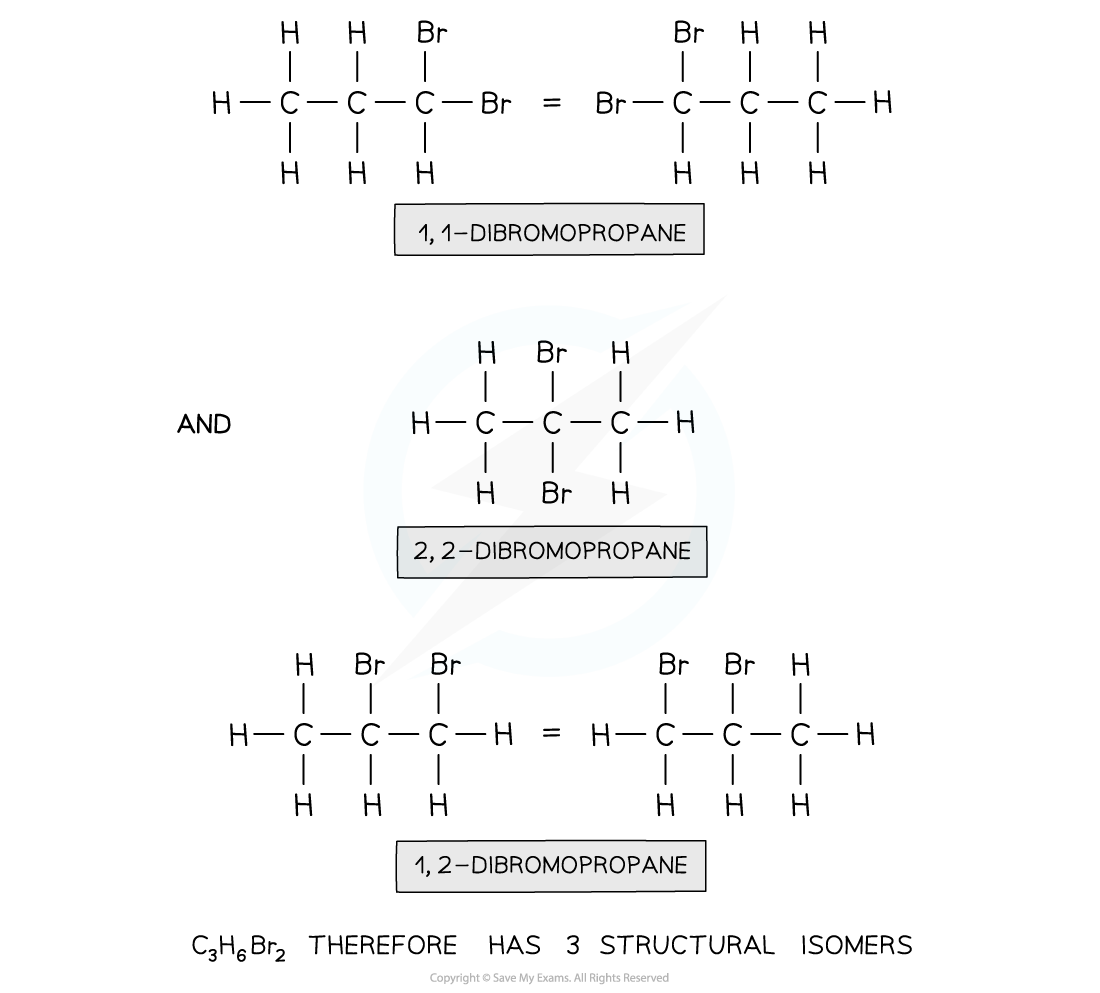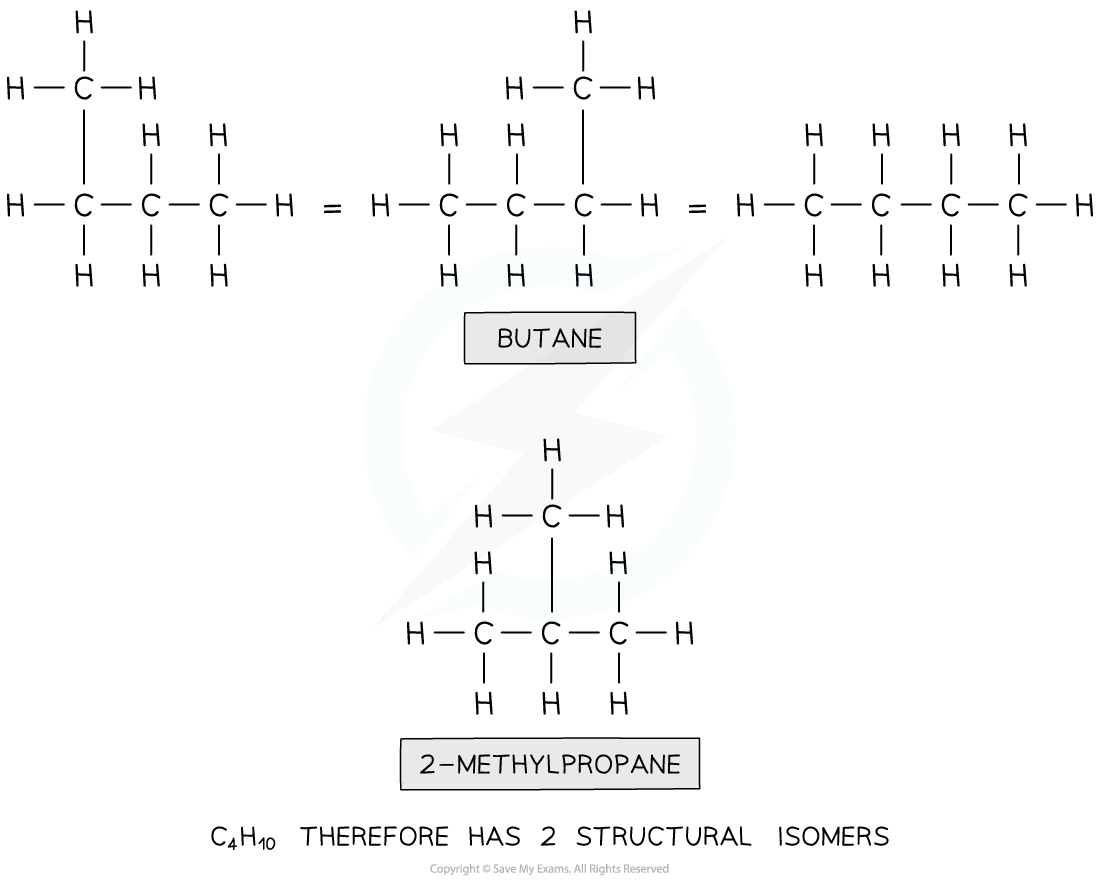- 翰林提供学术活动、国际课程、科研项目一站式留学背景提升服务!
- 400 888 0080
CIE A Level Chemistry复习笔记3.1.13 Isomers of Organic Compounds
Deducing Isomers of a Compound
- You should be able to deduce all possible isomers for organic compounds knowing their molecular formula
Worked example: Isomers of dibromopropane

- Step 1: Draw the structural formula of the compound

- Step 2: Determine whether it is a stereo or structural isomerThere is no restricted bond rotation around the C-C bond and there is no chiral centre so it is structural isomerism
- Step 3: Determine whether it is a functional group, chain or positional isomerism
- Functional group? No, as Br is the only functional group possible
- Chain? No, as the longest chain can only be 3
- Positional? Yes, as the two bromine atoms can be bonded to different carbon atoms


Worked example: Deducing isomers of C4H10

- Step 1: Draw the structural formula of the compound

- Step 2: Determine whether it is a stereo or structural isomer.
- There is no restricted bond rotation around the C-C bond and there is no chiral centre so it is structural isomerism
- Step 3: Determine whether it is a functional group, chain or positional isomerism
- Functional group? No, as there are no functional groups
- Positional? No, as there are no functional groups which can be positioned on different carbon atoms
- Chain? Yes!

Worked example: Deducing isomers of C2H2Cl2

- Step 1: Draw the possible structural formula of the compound

- Step 2: Determine whether it is a stereo or structural isomer
- The compound has to be unsaturated for it to have molecular formula C2H2Cl2 ; Due to the double bond there is restricted rotation about the C-C bond; This compound will therefore display geometrical isomerism
- Step 3: Determine whether it is optical or geometrical isomerism
- Optical? No, as there are no chiral centres
- Geometric? Yes!

转载自savemyexams

最新发布
© 2025. All Rights Reserved. 沪ICP备2023009024号-1









